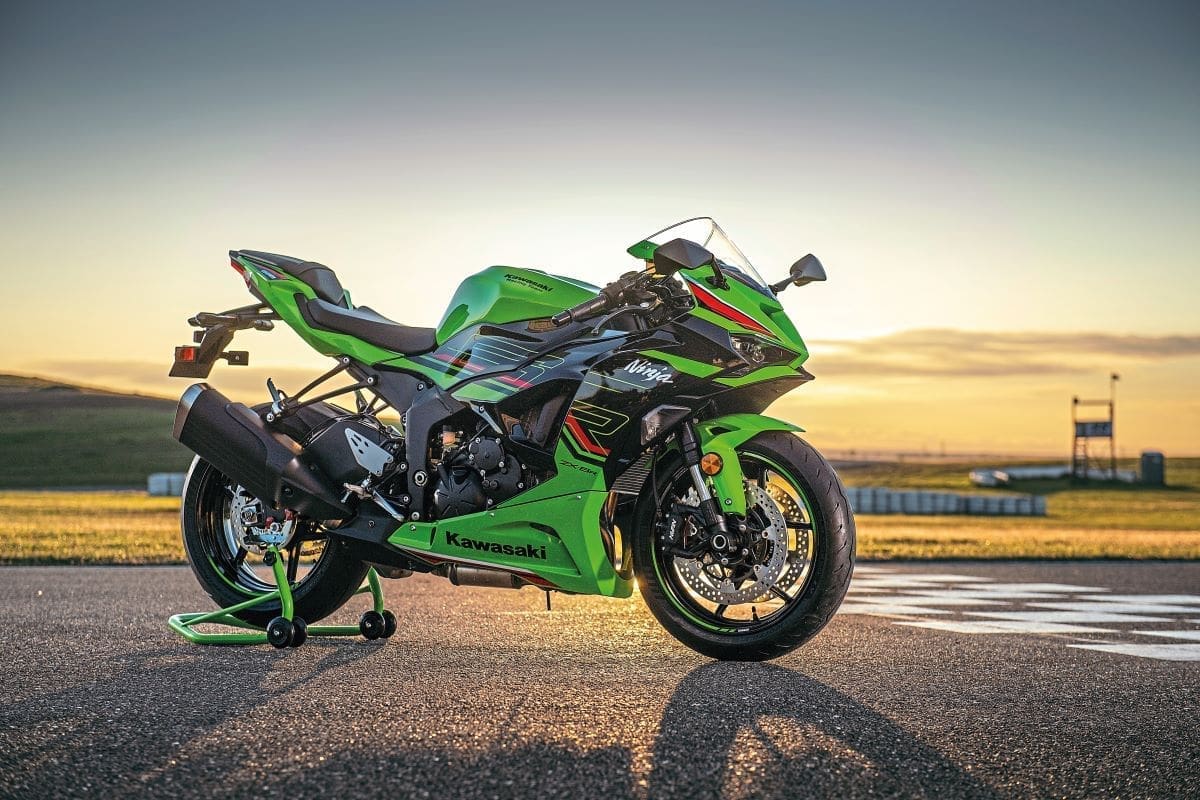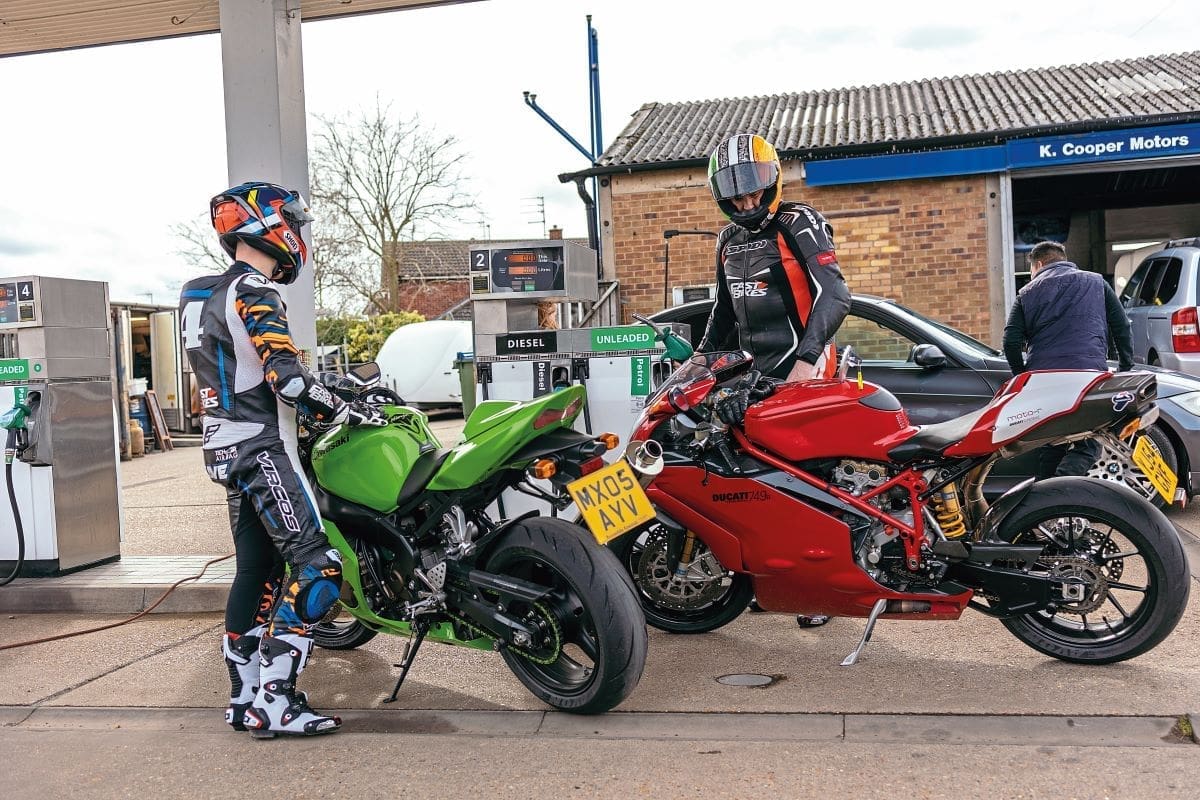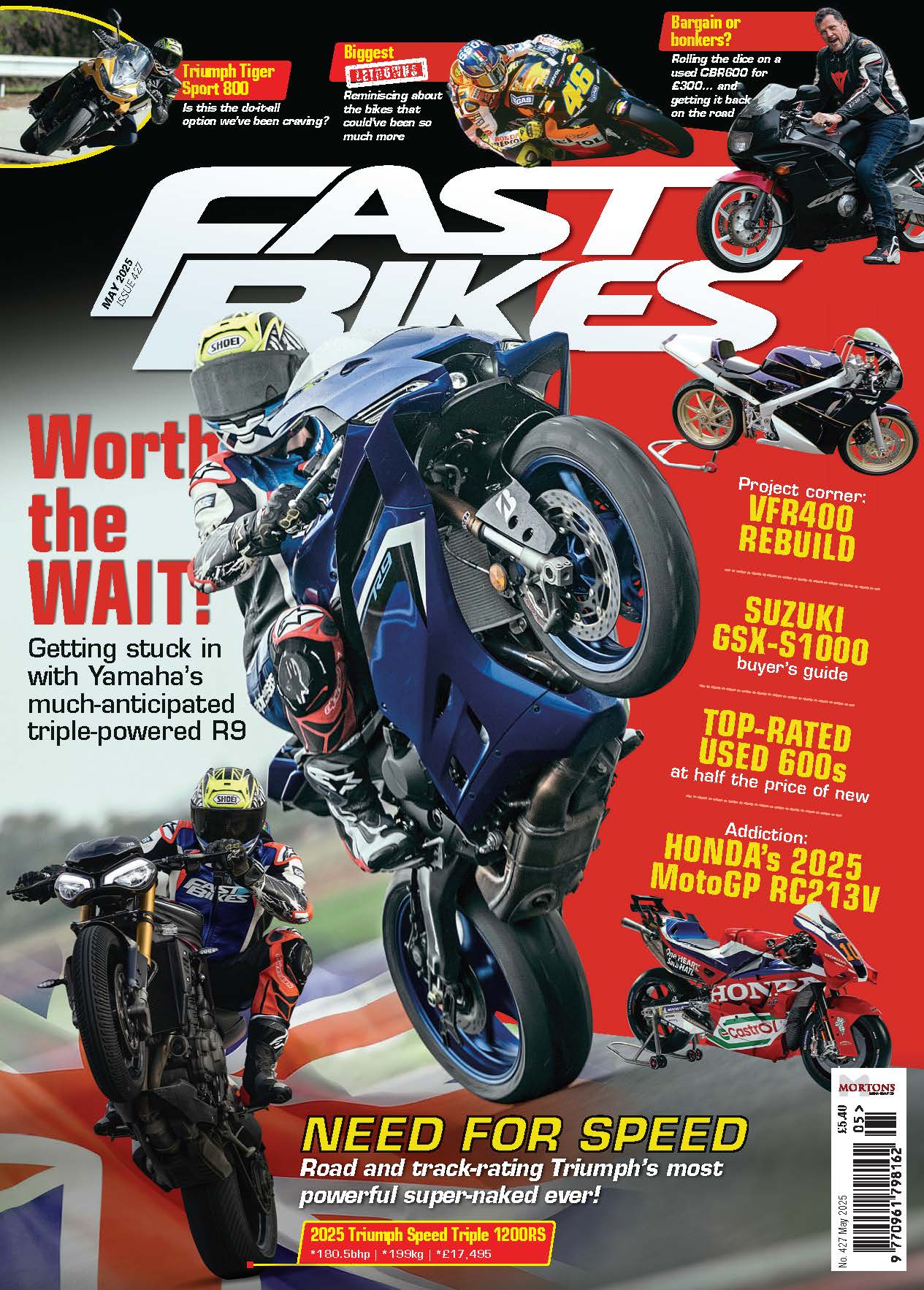When it comes to supersport racing, the class has had to evolve in more recent times. But that’s not such a bad thing, as Johnny explains….

Words by Big Mac Pics from Mortons Archive
Remember, not very long ago when 600cc sportsbikes were selling by the boatload, some manufacturers went to extraordinary lengths to gain an advantage on the supersport grid with arguably Kawasaki and Ducati being the most committed. They both produced super trick homologation specials of their contenders just so they could have a chance at spraying champagne. We took a close look at the Kawasaki ZX-6RR and Ducati 749R not that long ago, and what we learned is that they are no less special or trick homologation specials just because they’re only supersport bikes.
Today, the supersport class has gone through arguably its biggest overhaul probably since its inception. Over time, the class commonly known as “The 600s” has had its rules tickled so that the Triumph Daytona and MV Agusta F3 could compete with their 675cc engines, and in the past, for Ducati, with their 748 and 749cc engines on the basis that they aren’t naturally as powerful as the four cylinder Hondas, Kawasakis, Suzukis and Yamahas.
However, in 2023 the world and British supersport champions were riding 955cc Ducatis.
The Supersport class now has Ducati Panigale V2s, Suzuki GSX-R 750s, and Triumph 765s racing against the more conventional Yamaha R6s and Kawasaki ZX-6Rs. What is going on? How are people of a certain age like me going to get out of the habit of calling the class “The 600s”?
The re-invention of the Supersport class was arguably overdue, having more or less turned into a one make serious. With nobody making the bikes that were eligible for the class anymore, racers were essentially using used bikes to race, and the best value for money bike was either the Kawasaki or Yamaha. It all became a bit irrelevant, and something had to change.
A new set of rules imaginatively called the “Next Generation” rules open the door to the Ducati and Suzuki to race alongside the Triumph and 600s, and even the MV Agusta F3 800, but with different levels of tuning allowed depending on which bike you’re using. You can’t tune the Ducati or Suzuki at all, but you can go full grenade spec on a 600 if you want, but only while using FIM approved homologated parts. All the bikes have to have the same ECU and loom which gives the series organisers access and control over each bike’s firmware and therefore the option for example to reduce the rev limit of, say, the Ducati in order to reign in some of its obvious performance advantage.
On the surface you could argue that the new rules just mean that as a spectator you’re not seeing all the bikes at their full potential, but a much more positive way of looking at it is that in many ways it’s made the class a lot more interesting than it was for teams and spectators, and therefore more sustainable due to the variety of machinery. Plus, there’s the added spice that the rules adopted are the FIM rules and therefore teams in the supersport class can enter as wild cards at the British round of the WSB championship.


Honda Racing are entering their CBR600 with four-time British Supersport champion Jack Kennedy riding it after a spell in superbikes, Triumph are giving their full factory support to the Macadam team with another former champion Luke Stapleford as their rider, and Moto Rapido who are also a big superbike team with very close ties to Bologna are back with their Panigale V2 to defend the title they won in 2023 with Ben Currie. The class suddenly matters more to manufacturers and teams than it did previously, and when manufacturers start entering teams and offering factory support to others, there’s a reason for that; they must see signs of life and opportunity in that sector.
At the time of writing, it’s just been announced that Davy Todd will ride a Panigale V2 at the TT this year, and with Michael Dunlop doing a frankly outrageous 130mph lap on a Yamaha R6 last year, it’ll be really interesting to see what the Ducati can do. It further reinforces the point that once upon a time we thought of a supersport bike exclusively as a 600cc in line four cylinder screamer, but that ship has well and truly sailed now, and despite the reintroduction of CBR and ZX-6R, it’s easier to think of a supersport bike as pretty much any sportsbike that isn’t a superbike.
With that in mind, the introduction of the new National Sportbike championship is where you find the Yamaha R7, Suzuki GSX-8R, Aprilia RS660 and Triumph Daytona 660 to neatly summarise the change in the market from not very long ago with no new sportsbikes coming through, and superbikes as the only real options in the showrooms, to today with enough variety and choice of sportsbikes from the humble GSX-8R through to a Panigale V4R, and everything in between to warrant three distinct sportsbike race classes. There are six manufacturers in superbike, six in supersport and four in sportbike which no matter what you think about what the organisers have had to do for that to be the case, it is a giant improvement for race fans, and bike buyers alike. There is on track representation for them all.
So, when you’re watching a 955cc Ducati bashing fairings with a 750cc Suzuki, a 765cc Triumph, a 636cc Kawasaki and a 600cc Honda or Yamaha, just what are the technical differences between them?
For a start there’s a combined rider and bike weight for everyone of 239Kg except for Ducatis which is 242Kg, so no bike has a weight advantage, but the Ducati has a weight disadvantage. Then there’s the rev limits which will be under constant review every three rounds when top speed and acceleration on the straights will be analysed along with lap times and corner by corner data. As well as lower rev limits being imposed, the minimum weight can be changed, air restrictors can be added, and what the FIM describe as “concession parts” can be added, which is a loose and vague way of saying “and anything else we deem necessary to even the field up”. The other rule that’s worth noting is the Ducatis, Triumphs and Suzukis have a lower engine allocation which is definitely a consideration with how far you go when tuning the engine, not that you even can on the Ducati.


The approved parts listed that teams must use on their bikes are split into categories that focus on the engine, chassis and electronics. All bikes have to use the same ECU and loom so that the organisers have access and control over each bike’s firmware. Curiously this means that the ZX-6R, CBR600 and GSX-R750 all have to be converted to ride by wire set ups, which is a further reminder of how dated they are in some areas. The chassis parts available for all the bikes are broadly the same, and as you’d expect, such as a different link for the rear suspension, rear sets and various covers. However, it’s the list of parts and amount of work you can do on the engines that tells the biggest story.
The R6 gets a long list of parts, of which different camshafts, valve springs, cylinder head and intakes are all listed as compulsory modifications for the bike to even be eligible. Likewise, the CBR list of compulsory parts for the engine alone amounts to 57 separate items, some are straightforward such as exhaust springs, but a closer look shows it also has to have different cams, cylinder head, piston rings and valve springs to bring it up to spec.
In contrast, the while the Ducati engine does have to have some of its parts swopped, none of those changes increase the performance of the engine, they are really aimed at durability and safety. The camshafts and cylinder head remain completely standard, even the head gasket is the same as the road bike.
The technical regulations for the Kawasaki 636, Suzuki 750, Triumph 765 and MV Agusta 800 fall somewhere in between the highly tuned 600s and the bog standard Ducati, and combined with the engine allocation, weight penalty on the Ducati and control over the bikes firmware by the organisers, you can see how any incentive for teams to just drop everything and buy Ducatis is at best minimal. You may choose to run a Ducati based on the logic that it is effectively a de-tuned road bike, and therefore should be more reliable and require less maintenance, but then the cost of buying one and crashing one is far greater than, say, for example, an R6, of which there are literally thousands in circulation and therefore the parts and purchase price is far less.


The one anomaly in the class is the Suzuki GSX-R750, which is the only bike that is not available to buy. The Triumph is actually a Street Triple 765RS with a fairing, and the R6 while not available to buy as a road bike, is still listed by Yamaha to buy as a “GYTR” track only bike, and of course the CBR and ZX-6R are both back in the showrooms, but not the Suzuki – it’s still a ghost.
Wouldn’t it be fantastic if Suzuki are looking at what Honda and Kawasaki have done and see their bike at the sharp end in supersport, then work out that with a very light touch they too can press the button and reintroduce the GSX-R750 back into the showrooms for circa £10k? I think if the 750 came back next, I might actually shed some happy tears, because as sad as the day was when Kawasaki and Honda announced the end of the CBR and ZX-6R, and as happy as I was to hear of their return, I think like many others, a little piece of me died inside when Suzuki canned the GSX-R750. So, even the vague prospect that it might come back either as a result of the rule changes or the return of the ZX-6R and CBR, or a combination of both is genuinely butterflies in the stomach for me.
It’s genuinely an interesting dilemma if you’re a race team looking to compete in the supersport class, and all I know as a race fan is that for the first time in years, the supersport class just got a whole lot more interesting than it has been for some time, and I’m already curious to see how it all plays out on track.





